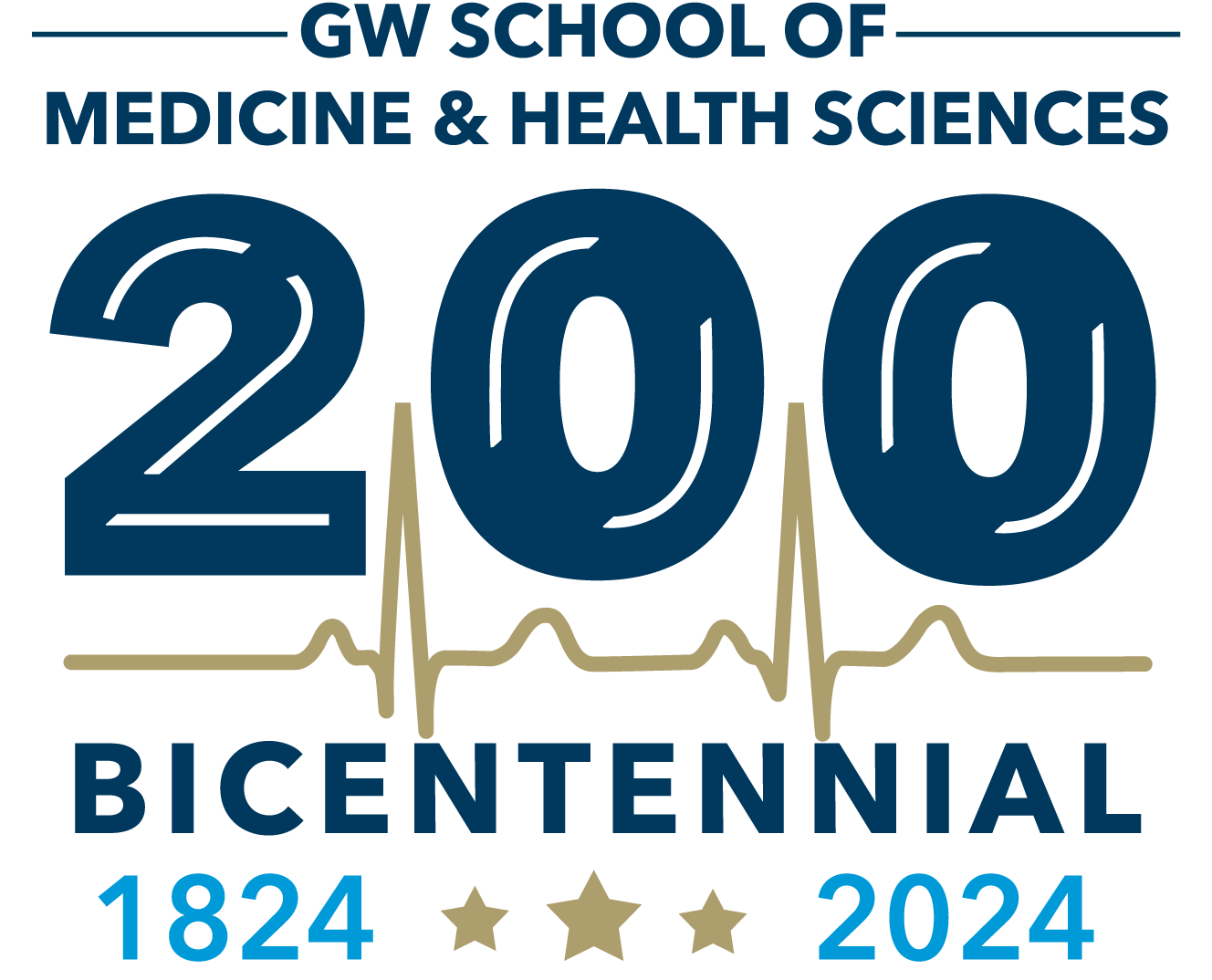Our History
1824: GW SMHS, founded as the National Medical College, becomes the 11th medical school in the United States.
1825: On March 30, the first lectures of the Medical Department, in anatomy, surgery and obstetrics, were held at Columbian College, inaugurating a first-of-its-kind program in the nation’s capital. Early tuition: $5 to be enrolled, $10 per course, $30 examination fee, and $5 diploma fee.
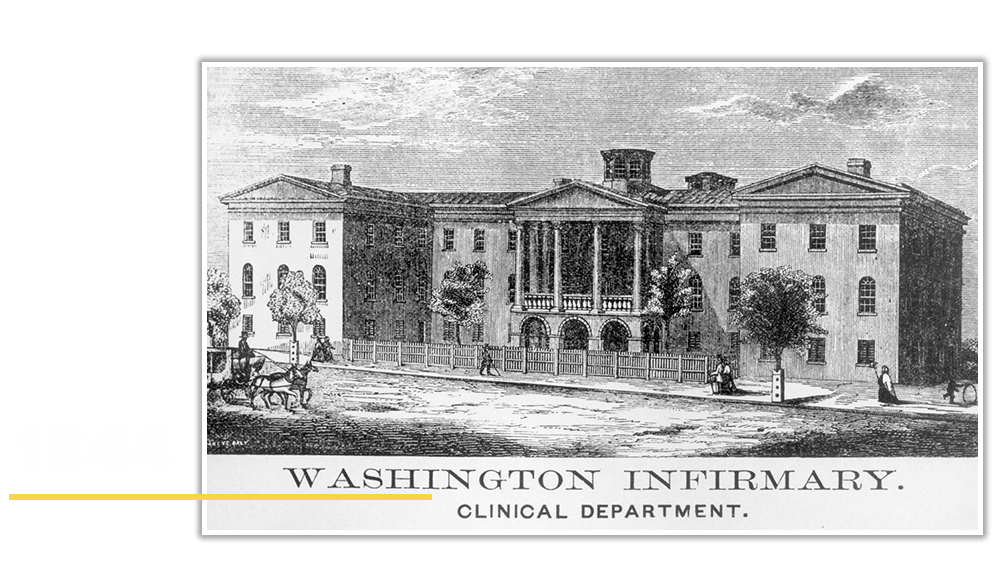
The GW Infirmary began operation as the first general hospital in the nation’s capital, and one of the first teaching hospitals in the country.
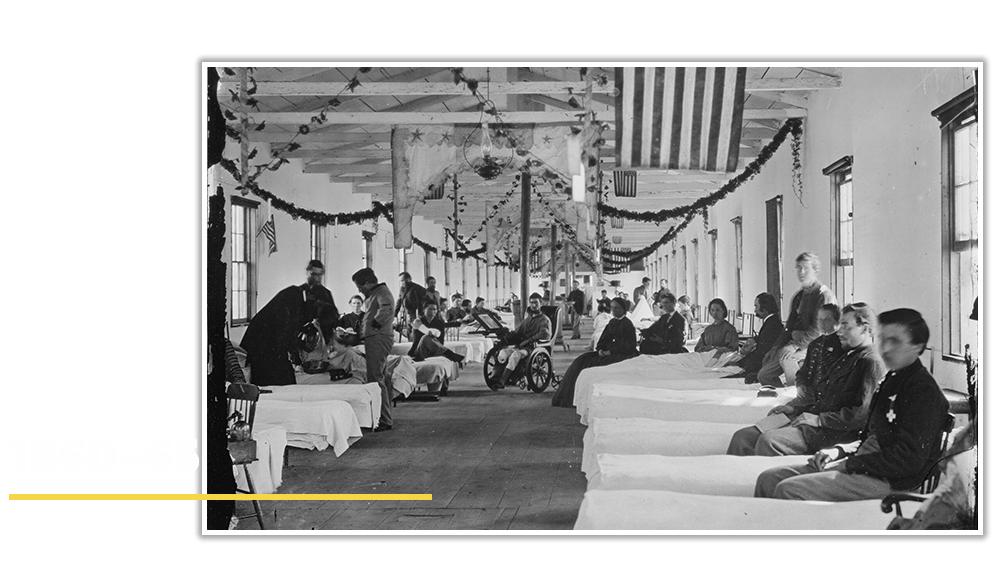
GW doctors played a role in the Civil War. Alexander Y. P. Garnett, MD, who had been a professor of anatomy since 1844, became Jefferson Davis’s personal physician in Richmond, Virginia. Abraham Lincoln received medical treatment from Robert King Stone, MD, a former dean of the medical faculty (1853) and faculty member at GW.

The government takes control of the medical infirmary and the College Hill property. When fire destroyed the infirmary in 1861, the College Hill building became a hospital and, with 884 beds, served as one of the four major military hospitals throughout the war.
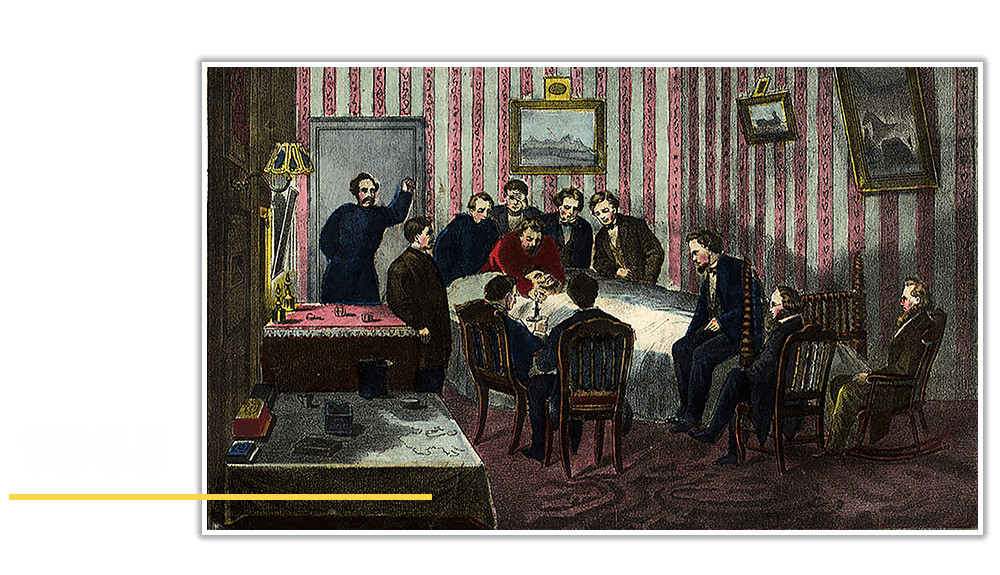
Albert Freeman Africanus King, MD 1861, professor and chair of obstetrics and dean of the National Medical College from 1879 to 1894, was among the first on the scene to care for the mortally wounded Abraham Lincoln. National Medical College professor of surgery and anatomy and dean, John F. May, MD, and Robert King Stone, MD, attend the deathbed of Abraham Lincoln. May was later called to identify the body of John Wilkes Booth.
1873: Columbian College adopts “The University Plan” and becomes Columbian University. The National Medical College becomes the Columbian University Medical School.
1880: Columbian University Medical School institutes a three-year curriculum with two required sessions of dissecting and two of clinical instruction.

Four women — Ellen W. Cathcart, Sarah A. Schull, Alice J. White, and Clara Bliss Hinds — are the first to successfully petition for admission Columbian University Medical School. In 1887, Clara Bliss Hinds becomes the first woman to earn a medical degree. By 2020, 58% of GW MD students were women.
1892: Seo “Phillip” Jaisohn, MD 1892, becomes the first Korean American graduate of Columbian University Medical School.

Walter Reed, MD, joins the faculty as a professor of bacteriology.
1894: Columbian University Medical School Doctor of Medicine program becomes a four-year degree program.
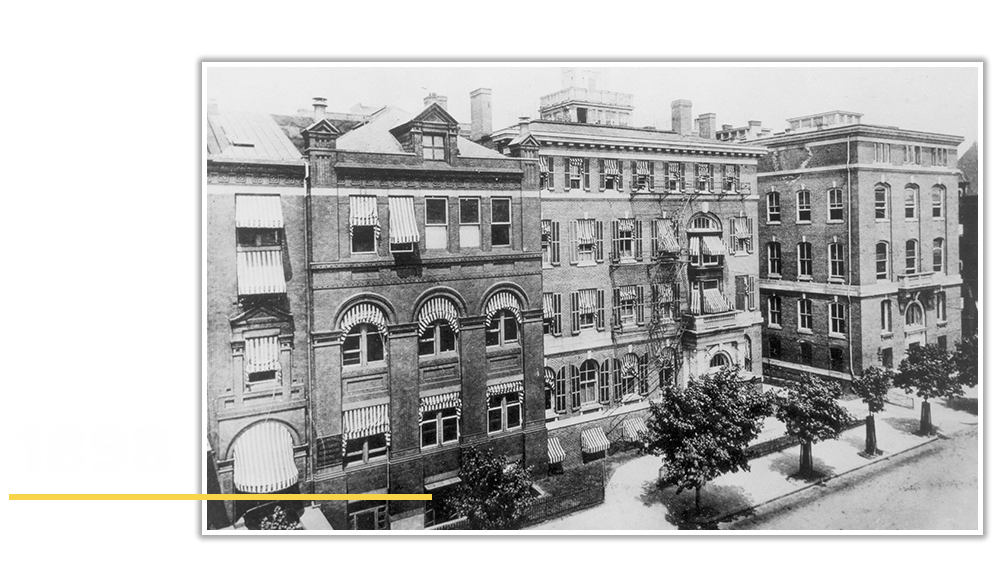
The Preparatory School on H street is remodeled to become the new Columbian University Hospital.
1904: The Columbian University Medical School and Hospital is rededicated as the George Washington University Medical School and Hospital.
The Board of Lady Managers, founded in 1899, is renamed the GW Women’s Board. The board is dedicated to providing assistance to the university hospital through the acquisition of new technology and equipment.
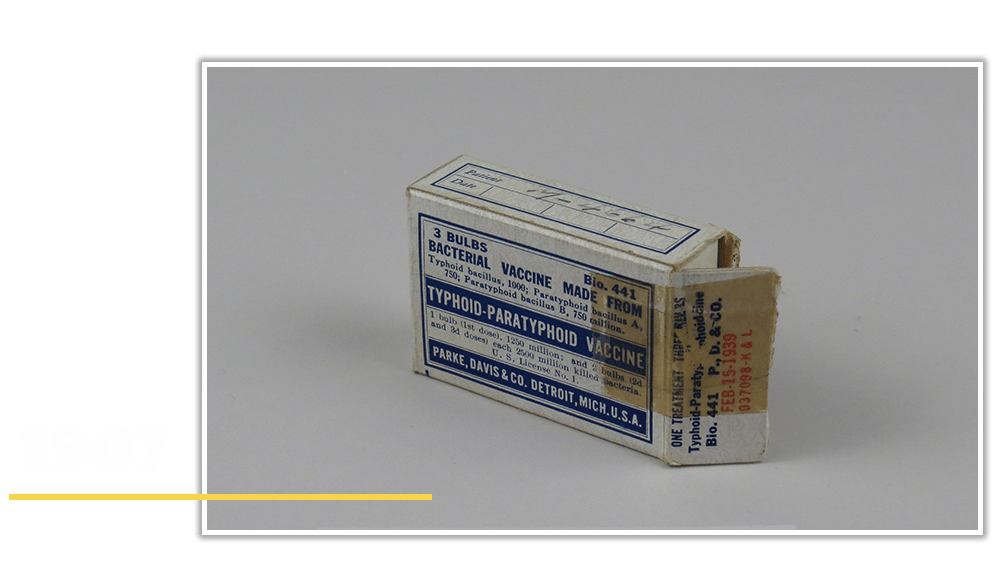
Frederick Russell, MD, ScD ’17, joins Columbian Medical School faculty as professor of pathology and bacteriology. In 1909, he perfects the typhoid vaccine and leads a vaccination program to immunize the U.S. Army.
1928: Department of Medicine splits into three entities, the School of Medicine, the School of Nursing, and the University Hospital. This original School of Nursing existed from 1911 to 1931.
1930: Claude Moore, MD, Hon ’91, forms the radiology department at GW Medical School.
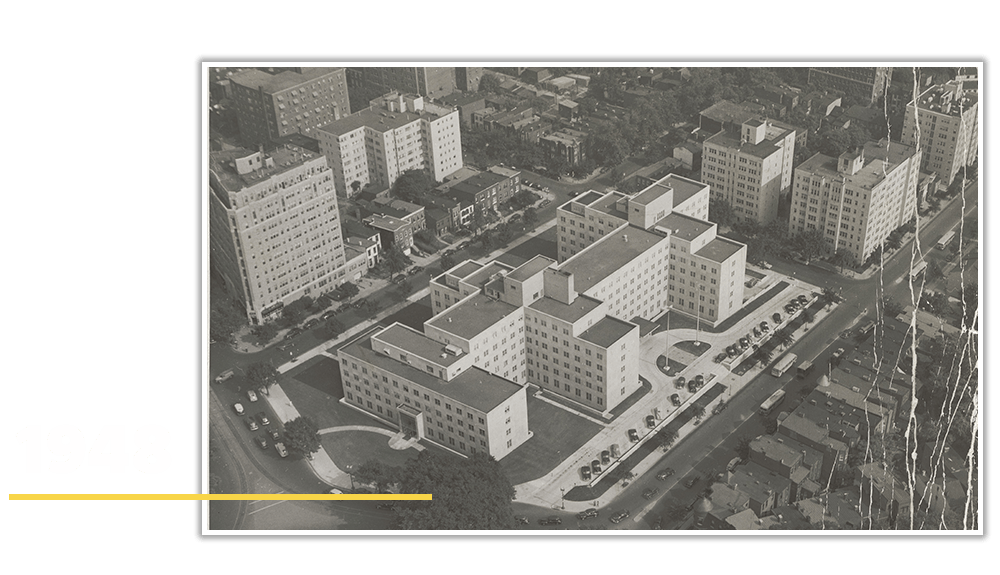
GW Hospital opens at the corner of Pennsylvania Ave and 23rd Street. At the time of its dedication, it was the largest private building in the District of Columbia.
Vincent du Vigneaud, PhD, professor of biochemistry at the Medical School from 1932 to1938, receives the Nobel Prize in Chemistry for his research on biochemically important sulphur compounds and the first synthesis of a polypeptide hormone, much of which was conducted at GW during his time at GW.

GW Medical School purchases one the first artificial kidney machines, known as the Kolff Kidney.

James Edwin Jackson, MD ’59, MPH, becomes the first Black student to earn his medical degree from GW. Jackson would go on to become a nationally renowned OB-GYN.
1964: Under the direction of Alvin Parrish, MD ’45, GW opens the first non-military dialysis unit in Washington, D.C.
1968: GW and Children’s National Hospital (Children’s National) establish a clinical partnership basing the school’s Department of Pediatrics at Children’s National and providing joint appointments to the pediatrics faculty members. Since then, GW SMHS students have rotated through a pediatric hospital rather than a Department of Pediatrics.
1969: H.B. Burns Memorial Building, home to the GW Medical Faculty Associates, is renovated to serve as clinical space. The building at 2150 Pennsylvania Ave. was listed on the District of Columbia Inventory of Historic Sites and the National Register of Historic Places in 2010.
1970: Julius Axelrod, PhD ’55, wins Nobel Prize in Physiology or Medicine for his discoveries concerning the release and reuptake of catecholamine neurotransmitters. In 1971, Axelrod received an honorary Juris Doctorate from GW, and in 1974 he became a professorial lecturer in pharmacology at GW SMHS.
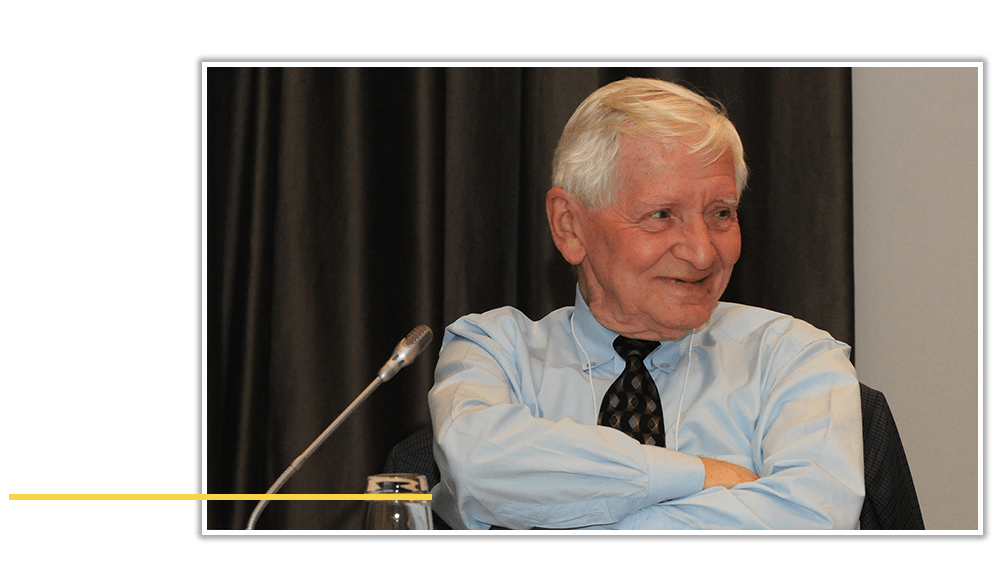
Thomas Piemme, MD, Professor Emeritus of Health Care Sciences, advocates for the establishment of a Physician Assistant Program at GW, which launched in 1972. GW SMHS moves from 1335 H St. to the new Walter G. Ross Hall at 23rd and Eye streets, NW.
1974: GW’s first class of Physician Assistant students, 15 candidates from the U.S. Navy and 10 civilian students are selected for admission as GW’s first class of PAs.
1974: Hubert V. Pipberger, MD, Professor Emeritus of Computer Medicine, is awarded the Einthoven Medal for his research in electrocardiography.
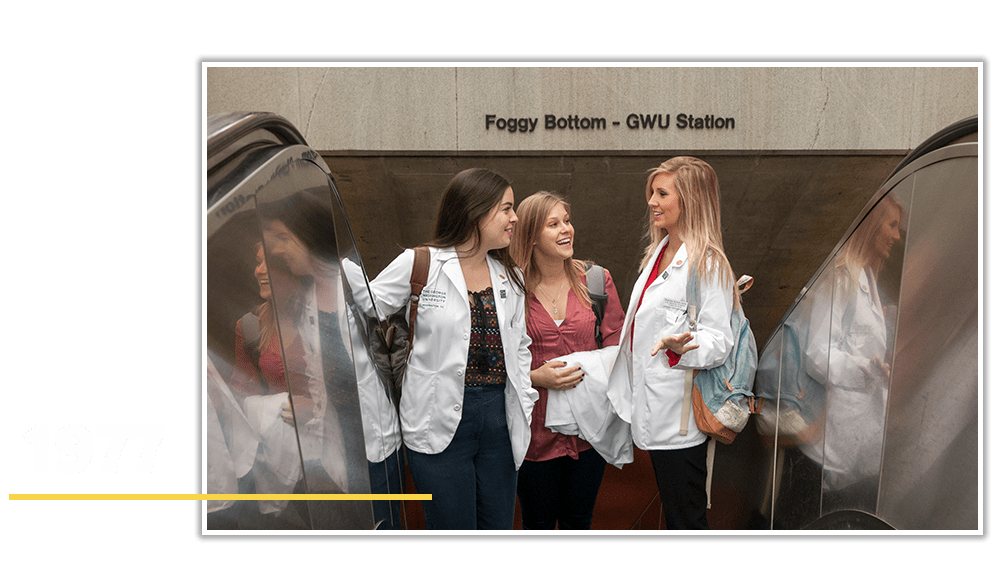
Foggy Bottom Metro Station Opens. The blue and orange Metro lines begin to service Foggy Bottom, providing easy and affordable access to the university.

The attempted assassination of Ronald Reagan puts GW Hospital in the spotlight as it successfully treats the wounded president. Joseph Giordano, MD, RESD ’73, former chair of the Department of Surgery and Lewis B. Saltz Professor of Surgery, who headed GW Hospital’s trauma team in 1981, was among the first doctors to treat the president. Benjamin Aaron, MD, now emeritus professor of surgery, was the lead surgeon during the two-hour emergency operation. Sol Edelstein, MD, professor of emergency medicine and anesthesiology; Samuel Spagnola, MD, professor of medicine; and Jack Zimmerman, MD ’64, emeritus professor of anesthesiology, all attended to the president during his first night following surgery.
1981: Gary Simon, MD, PhD, Walter G. Ross Professor of Medicine, and director of the Division of Infectious Diseases at GW SMHS, identifies the first case of AIDS in the District of Columbia.
1988: The Ambulatory Care Center, an addition to the adjoining Burns Building at 2150 Penn. Ave., is dedicated.
1997: Originally part of SMHS, the GW School of Public Health and Health Services is established. In 2014, following donations from the Milken Institute, the Milken Family Foundation, and Sumner Redstone Charitable Foundation the school is renamed the Milken Institute School of Public Health at GW.
1997: GW and Universal Health Services Inc. (UHS), a King of Prussia, PA-based health care management company, form a partnership — The District Hospital Partners, LP. Under the agreement, UHS owns 80% of GW Hospital and the university maintains a 20% stake.
GW SMHS launches the Office of International Medical Programs (IMP), charged with cultivating global partnerships and medical education, training, and research exchanges.

The University Board of Trustees approves a plan to establish The GW Medical Faculty Associates, an independent faculty practice plan affiliated with the School of Medicine and Health Sciences.
2001: Vice President Dick Cheney receives a balloon angioplasty at GW Hospital. In June, he returns to GW to receive a cardioverter-defibrillator. In 2010, he returns to GW Hospital following his fifth heart attack.
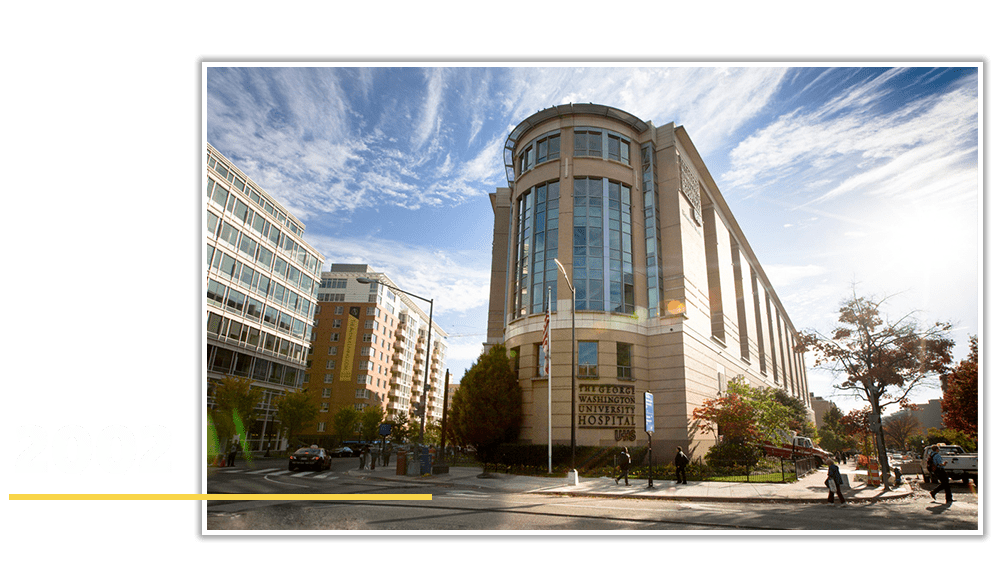
GW opens the new GW Hospital. The 371-bed facility, across 23rd Street from the previous GW Hospital, is the first new hospital in D.C. in more than 20 years.

GW SMHS and GW Hospital robotic surgery program co-founders (top, left to right) Jason Engel, MD; Harold Frazier II, MD; and Michael Manyak, MD, RESD ’85, performed first robotic surgery in the Mid-Atlantic region, a Robotic Radical Prostatectomy, using the da Vinci robot. The surgical team quickly became leaders in the region, as well as nationally, in Robotic Oncologic Surgery.
2004: The GW Medical Faculty Associates becomes first medical group in the region to launch electronic medical records.
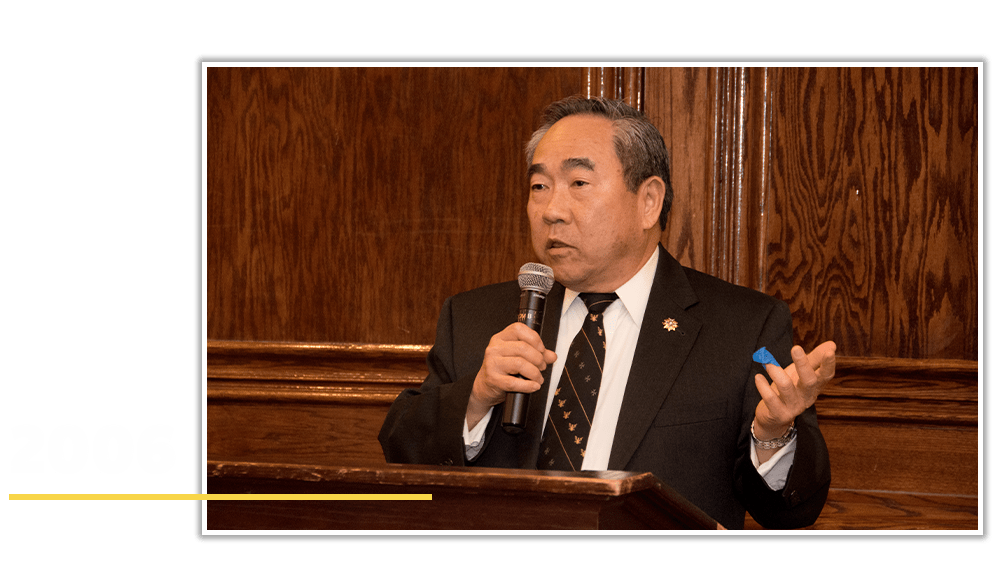
Kenneth Moritsugu, MD ’71, becomes the first Asian American to serve as U.S. Surgeon General. The retired rear admiral in the United States Public Health Service Commissioned Corps served as acting United States Surgeon General under Presidents George W. Bush and Bill Clinton.
2008: GW receives a $10 million gift from Katzen family to establish GW Katzen Cancer Research Center.
2010: The GW School of Nursing is created, but GW has taught nursing students for more than 100 years.
2010: Alan Greenberg, MD ’82, MPH, professor and chair of the Department of Epidemiology and Biostatistics at Milken Institute School of Public Health at GW, and Gary Simon, MD, PhD, Walter G. Ross Professor of Medicine and director of the Division of Infectious Diseases at GW SMHS, receive a five-year starter grant from the National Institutes of Health to become a Developmental Center for AIDS Research (CFAR). Five years later, in 2015, the center receives full accreditation and becomes the DC CFAR. In 2020, the center’s accreditation is renewed.
2010: GW SMHS and Children’s National receive a five-year, $20 million Clinical and Translational Science Award from the National Institutes of Health, one of only 60 such awards nationwide, to accelerate basic laboratory research discoveries into clinical practice. The award establishes the Clinical and Translational Science Institute at Children’s National.
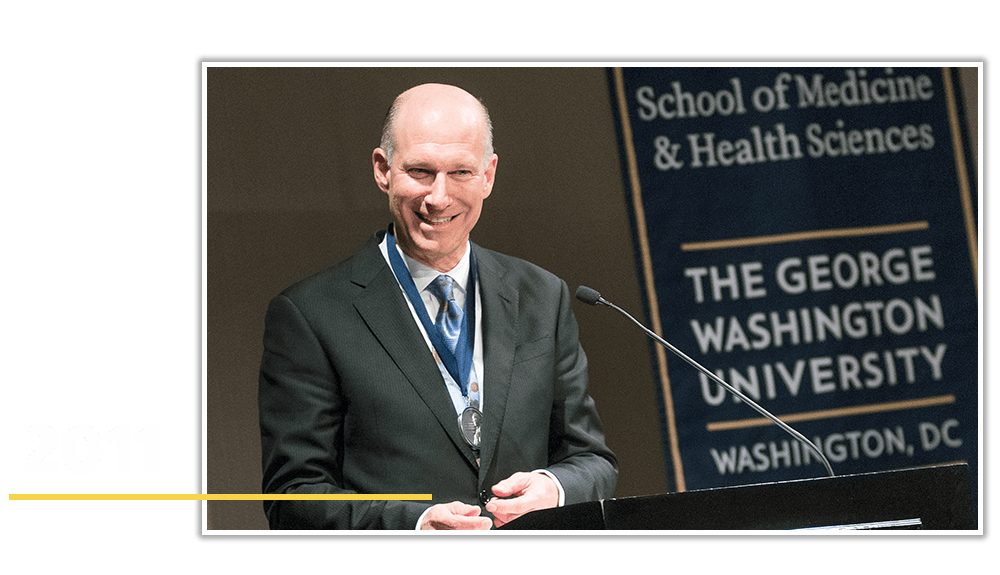
GW appoints Jeffrey S. Akman, MD ’81, RESD ’85, to be vice president for health affairs and dean of SMHS, making him the first openly gay man to hold the positions. In 2015, Akman was named to the Presidential Advisory Council on AIDS.
2011: Nobel Prize winner Ferid Murad, MD, PhD, joins GW SMHS as a university professor in the Department of Biochemistry and Molecular Medicine.
2013: Dean Akman establishes the Office of Diversity and Inclusion at SMHS to attract and support talented students, faculty, and staff inclusive of those who are traditionally underrepresented in medicine and to foster a culture and climate that appreciates the added value of diversity.
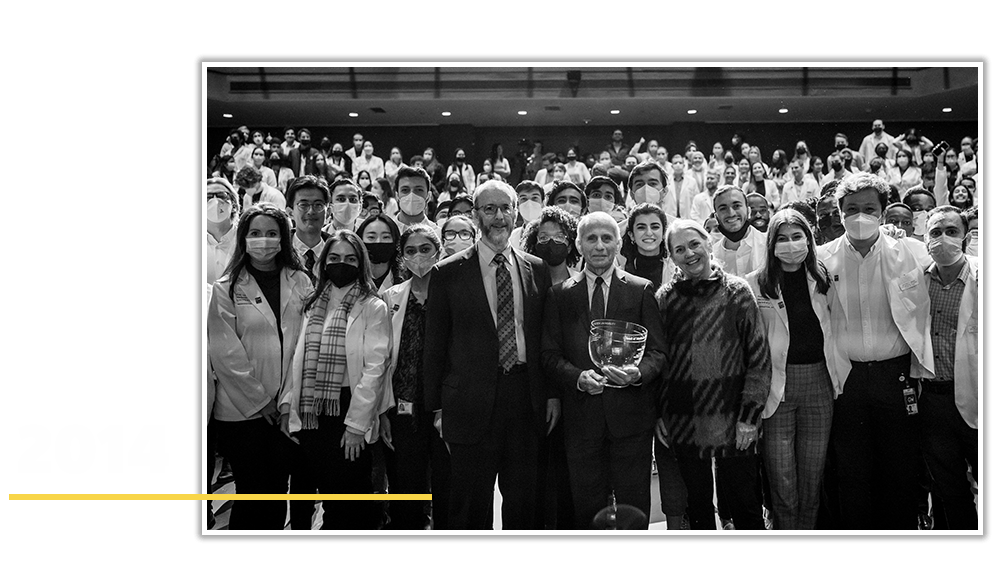
GW SMHS established its Clinical Public Health curriculum to integrate public health and population health throughout students’ four-year medical education. The program initially begins with an intensive three-day clinical public health workshop, “How Physicians Can Help Create an AIDS-Free Generation,” featuring an address by Anthony Fauci, MD, then director of the National Institute of Allergy and Infectious Diseases.
2014: GW SMHS dedicates a 35,000-square-foot lab space, which occupies the fifth and sixth floors of Ross Hall for the Research Center for Neglected Diseases of Poverty.
2014: SMHS expands its Clinical Learning and Simulation Skills (CLASS) Center. The CLASS Center supplements classroom learning with comprehensive clinical exposure, feedback, and evaluation that prepare students to become both technically adept and compassionate caregivers.
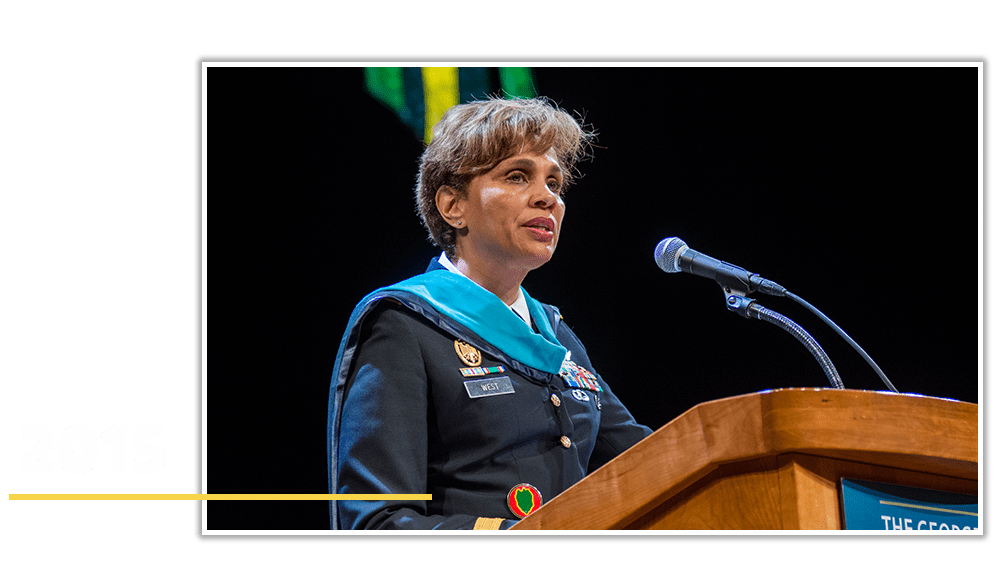
Nadja West, MD ’88, becomes the first African American woman to serve as Lieutenant General in the U.S. Army, the highest-ranking woman to graduate from the U.S. Military Academy at West Point, and the first African American woman to serve as the U.S. Army Surgeon General.
2018: GW Hospital is selected by the District of Columbia to oversee Cedar Hill Regional Medical Center, GW Health, a new hospital and health complex in southeast Washington, D.C., on the campus of St. Elizabeth’s East. GW MFA and the GW SMHS will serve as the physician and academic arm of the city’s first new hospital since GW Hospital opened in 2002.
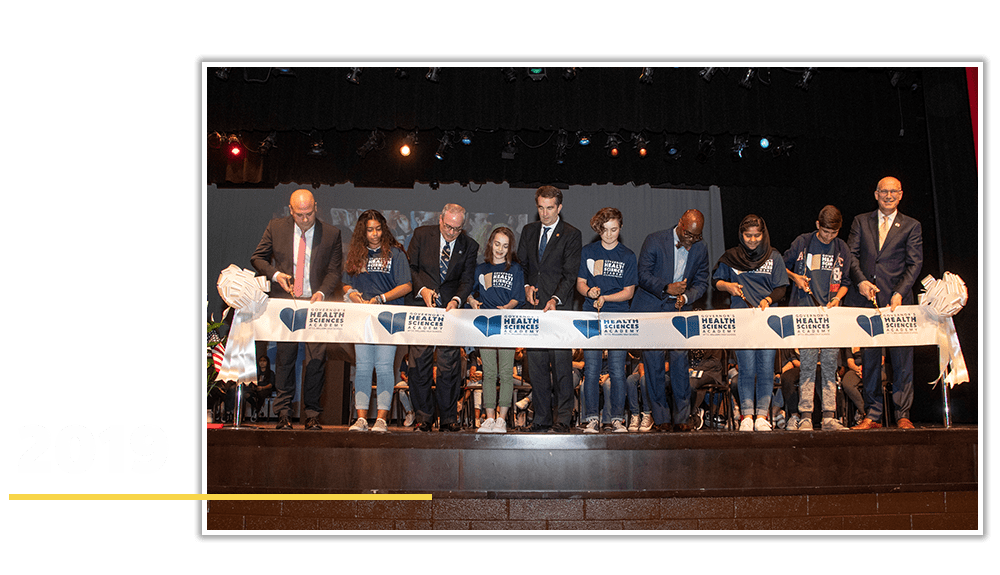
GW SMHS launches the Governor’s Health Sciences Academy at Alexandria City High School, a pipeline program designed to help prepare high school students for meeting the workforce needs of existing business and industry.
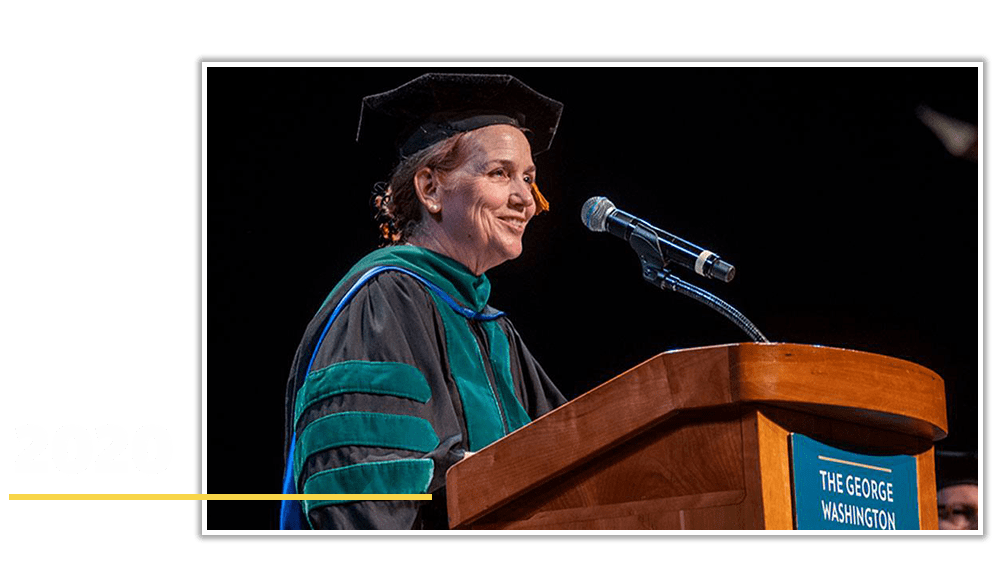
GW appoints Barbara L. Bass, MD, RESD ’86, vice president for health affairs and dean of GW SMHS and CEO of The GW Medical Faculty Associates, making her the first person to hold all three positions and the first female vice president and dean.

GW SMHS, serving on the front lines of the fight against the COVID-19 pandemic, is selected as one of 90 sites participating in clinical trials of experimental vaccines and monoclonal antibodies as part of the COVID-19 Prevention Network.
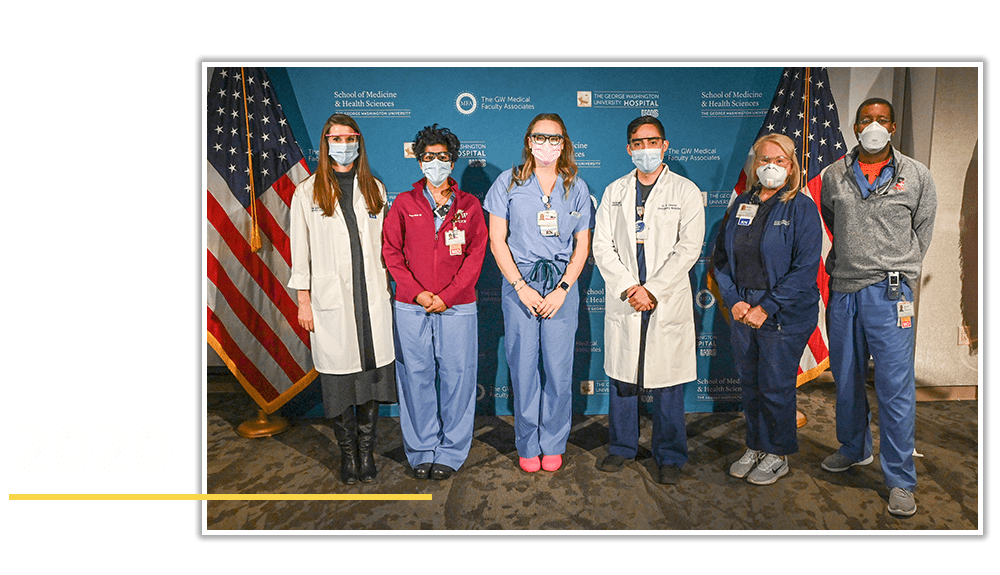
Health and Human Services Secretary Alex Azar, U.S. Surgeon General Jerome Adams, and D.C. Mayor Muriel Bowser (D) join GW clinical enterprise leadership and five members of the GW health care workforce to receive some of the first vaccinations as part of the official kickoff of the federal government’s COVID-19 vaccination initiative, Dec. 14, 2020.
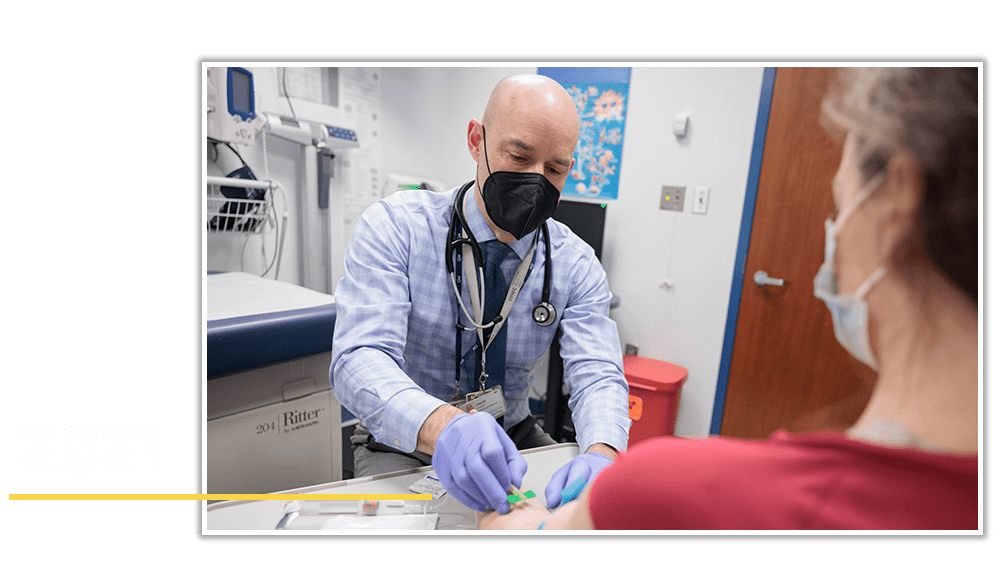
2021: GW’s Vaccine Research Unit is selected as one of the phase III clinical trial sites to test the Moderna mRNA-1273 vaccine.
2022: GW celebrates the 50th Anniversary of its Physician Assistant Program. GW PA alumni now number more than 2,000.
2022: Julie E. Bauman, MD, MPH, is appointed to serve as the associate dean of cancer and professor of medicine, and the Dr. Cyrus Katzen Family Director of the George Washington University Cancer Center.
2022: Nine endowed professorships, the Bicentennial Professorships, are established in GW SMHS using proceeds from the sale of the university’s partnership interest in GW Hospital.

GW establishes the Center for Population Health Sciences and Health Equity and selects LaQuandra S. Nesbitt, MD, MPH, former director of DC Health, to serve as senior associate dean and executive director of the center. Nesbitt is also inducted as the inaugural Bicentennial Endowed Professor of Medicine and Health Sciences.
2023: GW and and LifeBridge Health sign an agreement to establish a new Regional Medical Campus for the GW SMHS MD Program. Based at Sinai Hospital of Baltimore, the Regional Medical Campus serves home to a cohort of third- and fourth-year medical students who opt to train in a community-focused health system.
2023: GW SMHS Office of International Medicine Programs signs a six-year contract with Ibn Sina University for Medical Sciences to provide academic support for the new medical institution.

Construction on Cedar Hill Regional Medical Center, GW Health hits a high mark. Installation of the last structural element of the $403 million, 407,000 square foot hospital complex signals the facility is on track to begin serving Washington, D.C., residents in early 2025.
